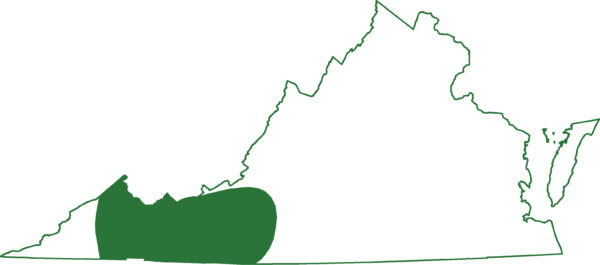122 © Scott Bolick
123-1 © Matt Neff
124 The swollen abdomen of this female indicates she is carrying eggs. © Paul Sattler
Fact File
Scientific Name: Desmognathus orestes
Classification: Amphibian
Conservation Status:
- Species of Greatest Conservation Need-Tier 4a on the Virginia Wildlife Action Plan
Size: Up to 4 inches
Identifying Characteristics
Blue Ridge Dusky Salamanders are very similar to the Allegheny Mountain Dusky Salamander. The back often has a broad stripe either straight edged or wavy that may be yellow, brown or red. The belly is light to dark gray. Larger adults may be uniformly dark gray.
Distribution:
Blue Ridge Dusky Salamanders are very similar to the Allegheny Mountain Dusky Salamander. The back often has a broad stripe either straight edged or wavy that may be yellow, brown or red. The belly is light to dark gray. Larger adults may be uniformly dark gray.

Role in the Web of Life
Mating occurs in the spring, summer or fall. Females lay eggs; usually in May–July in depressions, under cover objects near water, then remain with them until hatching. Larvae live in the quiet, slower moving portions of streams and metamorphose the following spring.
Conservation
Tier IV Species of Greatest Conservation Need in Virginia’s Wildlife Action Plan.
Last updated: July 18, 2024
The Virginia Department of Wildlife Resources Species Profile Database serves as a repository of information for Virginia’s fish and wildlife species. The database is managed and curated by the Wildlife Information and Environmental Services (WIES) program. Species profile data, distribution information, and photography is generated by the Virginia Department of Wildlife Resources, State and Federal agencies, Collection Permittees, and other trusted partners. This product is not suitable for legal, engineering, or surveying use. The Virginia Department of Wildlife Resources does not accept responsibility for any missing data, inaccuracies, or other errors which may exist. In accordance with the terms of service for this product, you agree to this disclaimer.

